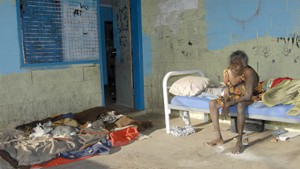Home » Commentary » Opinion » Traditional culture at odds with closing the gap
· The Australian
 Nine years, tens-of-billions of dollars, and tonnes of national goodwill have not made much impression on the appalling gaps in social outcomes between the most disadvantaged indigenous Australians and other Australians.
Nine years, tens-of-billions of dollars, and tonnes of national goodwill have not made much impression on the appalling gaps in social outcomes between the most disadvantaged indigenous Australians and other Australians.
This is the depressing finding of the 2017 Closing the Gap report — which has prompted Prime Minister Malcolm Turnbull to announce yet another reinvention of the federal government’s approach to indigenous policy.
The annual ritual of acknowledging the failure to close the gap should prompt us to consider the well-meaning but contradictory character of our approach to indigenous affairs.
Indigenous policy continues to pull in different and difficult to reconcile directions. Recognising the tensions and contradictions might encourage us to adopt a more realistic attitude towards closing the gap and overcoming indigenous disadvantage.
The Rudd Government’s Closing the Gap strategy introduced in 2008 extended the Howard government’s idea of Practical Reconciliation. The idea was that if indigenous people, regardless of where they lived, were given access to the same standard of social services as other Australians, they would hopefully achieve the same health, education, employment and other social outcomes.
This ‘mainstreaming’ of indigenous services replaced the policy of Aboriginal self-determination established in the 1970s, which involved ‘indigenous-controlled’ organisations delivering services to indigenous people. By the mid-2000s, Aboriginal self-determination was widely acknowledged to have failed to improve outcomes, especially in the remote ‘homeland’ communities with the highest levels of disadvantage.
It now seems that the Turnbull government has gone back to the future: it has pledged to empower indigenous communities and collaborate with indigenous organisations to deliver local solutions – a renewed focus on self-determination, in combination with a commitment to ensuring indigenous programs are properly evaluated.
The Howard, Rudd, and Turnbull approaches, have all been underpinned by the same principle: government support should be extended to allow indigenous people to continue to live on their traditional lands in order preserve traditional indigenous culture and identity.
This was also the idea behind Kevin Rudd’s recent comments about the emergence of a “second stolen generation” if indigenous children continue to be “separated from their culture” at record rates due to abuse and neglect.
The worst social outcomes and disadvantage are concentrated among the 20% of indigenous Australians who live in the rural and remote homelands with the worst social dysfunction.
By contrast, the 80% of indigenous Australians who live mainly in urban areas achieve social outcomes that are the same as their non-indigenous peers. Moreover, their indigenous identity is unquestioned, despite having little contact with traditional lands and traditional culture.
Yet many Australians continue to support the idea of indigenous people living close to culture on traditional lands. They believe this is the path to true Reconciliation by making up for the historic sins of colonial dispossession. Yet these attitudes help make the problems worse.
This is the great insight of anthropologist Peter Sutton, who spent many years working in indigenous communities in Cape York. He has shown how the problems in the homelands cannot simply be blamed on colonial oppression, lack of self-determination, or suppression of indigenous culture.
As Sutton argues, the remote communities with the worst problems are those that have been least and most recently touched by colonisation, and where people have continued to live closest to a traditional manner and on their traditional lands. In these communities, the persistence of traditional culture practices — such as hunt and gather-style hygiene and sanitation habits and permissively neglectful attitudes to parenting children — contribute significantly to poor health, child welfare, and other social outcomes.
Welfare, alcohol, drugs, and pornography imported into indigenous communities through contact with non-indigenous culture continue to cause havoc. But as the Alice Springs indigenous leader Jacinta Price has powerfully emphasised, epidemic levels of domestic violence in indigenous communities are caused by the deep cultural roots of some indigenous men’s traditional, violent and misogynistic attitudes towards woman.
The implications for indigenous policy are confronting. It implies that if we want indigenous people to continue to live remotely in order to live close to culture, maybe we need to accept that the consequence will be gaps in social outcomes.
Adopting this realistic approach will not solve the intractable problem of indigenous disadvantage. But it may help bring clarity to discussion of indigenous policy, and what can and can’t be done to close the gap.
Dr Jeremy Sammut is a Senior Research Fellow at The Centre for Independent Studies and author of The Madness of Australian Child Protection and The Kinship Conundrum: The Impact of Aboriginal Self-Determination on Indigenous Child Protection.
Traditional culture at odds with closing the gap